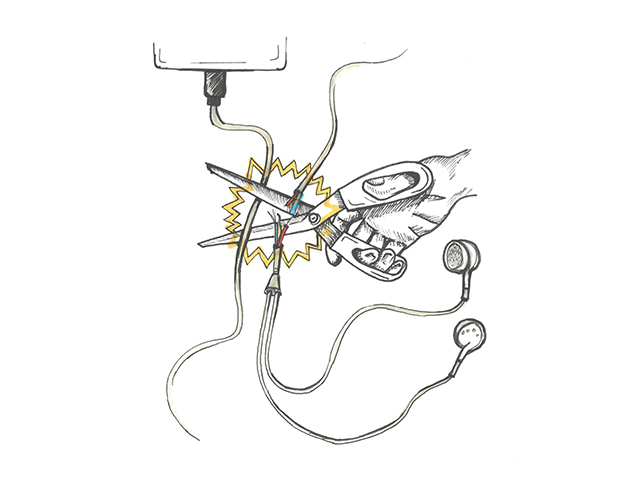
[dropcap]W[/dropcap]ireless technology might not be the utopia you think it is.
In September of last year, Apple released the iPhone 7 and it brought in many new features such as water and dust resistance, a new home button, the addition of a second lens on the plus model, as well as many other internal changes.
However, the most talked about change was that of the removal of the beloved 3.5 mm headphone jack.
140 years after its introduction the headphone jack was, and for many still is, a crucial aspect of the phone. It allows us to shut off from the world around us as we make our way to and from college or work. Many people believe the removal of the headphone jack was an attempt by apple to push their new wireless earphones the AirPods.
Now in 2017 other smartphone manufactures including HTC, Motorola and Google have all followed suit and just last month Apple announced the new iPhone 8 and X will allow wireless charging. Wireless charging isn’t anything new; android phones have had it since 2004, but it means the company’s plans to make a fully wireless iPhone are advancing rapidly, as are the industry’s.
The idea of a life where you don’t need to worry about untangling wires to charge your devices sounds great, but there are a few draw backs to this ideal.
For example, wireless earphones, just like your phone, contain a battery which only holds a certain charge.
Apple’s AirPods, released last year at retail price of €179, last approximately five hours on a single charge, or 24 hours with the supplied case for charging. Google’s Pixel Buds released last week are also advertised to last five hours or 24 hours with the case. For many this is enough but it seems to lose its purpose when you still end up plugging the case or earphones in to charge using a wire.
For the price, consumers would much rather deal with untangling their earphones the odd time rather than worry about how long they have left. The cost of these wireless earphones also becomes an issue if and when you need to replace them.
Then come the limits of wireless charging, which isn’t as the name suggests completely wireless. You still must place the phone on a pad which is in turn plugged into an outlet just like the charger you have now. So, if you enjoy scrolling through Twitter, Facebook, Instagram, or going down YouTube rabbit holes before you go to bed with your phone on charge, this change isn’t for you.
Wireless charging in its current state is also slower than fast charging found in most new products and would need to undergo a vast improvement for people to be comfortable using it as the primary method of charging their devices.
For the moment the only thing a wireless world would really do for us is tether us to our batteries and give us more charging cables to untangle.
Jonathon Lynam



